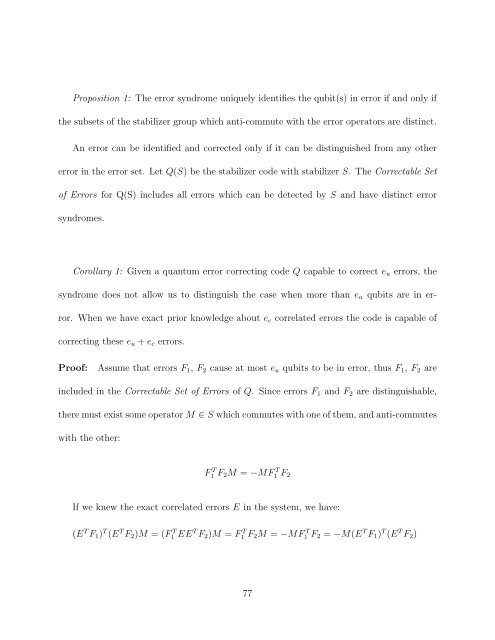t b a b a
t b a b a
t b a b a
Create successful ePaper yourself
Turn your PDF publications into a flip-book with our unique Google optimized e-Paper software.
Proposition 1: The error syndrome uniquely identifies the qubit(s) in error if and only if<br />
the subsets of the stabilizer group which anti-commute with the error operators are distinct.<br />
An error can be identified and corrected only if it can be distinguished from any other<br />
error in the error set. Let Q(S) be the stabilizer code with stabilizer S. The Correctable Set<br />
of Errors for Q(S) includes all errors which can be detected by S and have distinct error<br />
syndromes.<br />
Corollary 1: Given a quantum error correcting code Q capable to correct eu errors, the<br />
syndrome does not allow us to distinguish the case when more than eu qubits are in er-<br />
ror. When we have exact prior knowledge about ec correlated errors the code is capable of<br />
correcting these eu + ec errors.<br />
Proof: Assume that errors F1, F2 cause at most eu qubits to be in error, thus F1, F2 are<br />
included in the Correctable Set of Errors of Q. Since errors F1 and F2 are distinguishable,<br />
there must exist some operator M ∈ S which commutes with one of them, and anti-commutes<br />
with the other:<br />
F T 1 F2M = −MF T 1 F2<br />
If we knew the exact correlated errors E in the system, we have:<br />
(E T F1) T (E T F2)M = (F T 1 EE T F2)M = F T 1 F2M = −MF T 1 F2 = −M(E T F1) T (E T F2)<br />
77

















